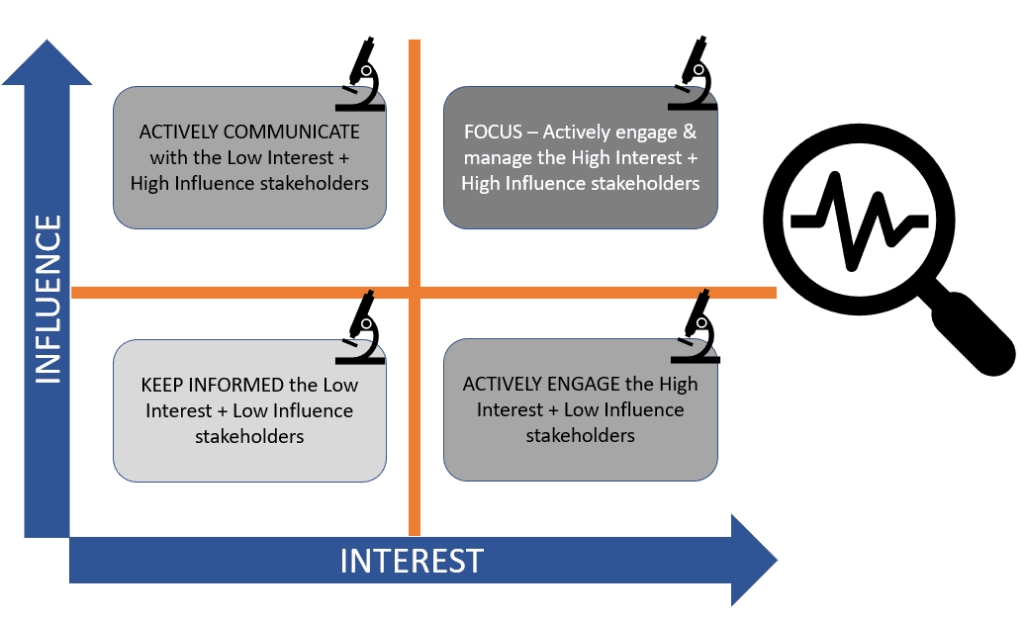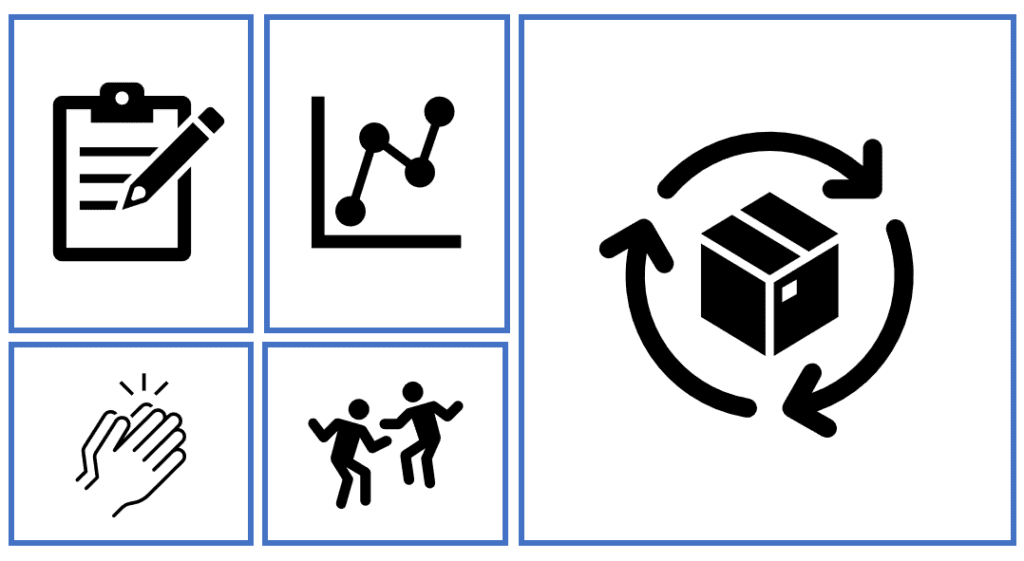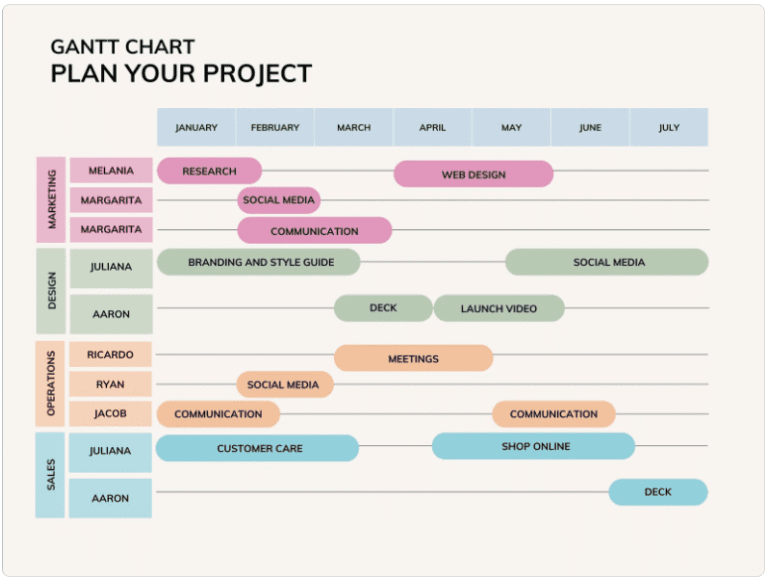How To Create Successful Stakeholder Management Plan in 2023

A stakeholder management plan is a critical component of any project, as it ensures that stakeholders are identified, engaged, and their needs and expectations are addressed. By proactively managing stakeholders, project managers can reduce the risk of project failure, increase stakeholder support and buy-in, and ultimately increase the chances of project success.
In this blog post, we’ll provide a step-by-step guide on how to create a successful stakeholder management plan for your project, including techniques for identifying and analyzing stakeholders, developing a stakeholder engagement strategy, creating a stakeholder communication plan, addressing stakeholder concerns and expectations, and monitoring and evaluating the effectiveness of the stakeholder management plan template used.
Whether you’re a seasoned project manager or new to project stakeholder management, this guide will provide you with practical tips and strategies to help you create a stakeholder management plan that is tailored to your project’s unique needs and objectives.
Identifying Stakeholders

The success of a stakeholder management plan heavily depends on the accurate identification of stakeholders. In this section, we will explore the definition of stakeholders, the different types of stakeholders that exist for a given project, and techniques for identifying stakeholders.
By understanding these key concepts, project managers can ensure that all relevant project stakeholders are included in the plan and that their needs and expectations are addressed throughout the project lifecycle.
Definition of Stakeholders
To effectively identify stakeholders, it’s important to have a clear definition of what a stakeholder is. A stakeholder is anyone who has an interest in or can be affected by the project, either positively or negatively.
This can include individuals or groups who are directly involved in the project, such as project team members, sponsors, and customers, as well as those who are indirectly impacted, such as community groups, government agencies, or competitors.
Types of Stakeholders
Different types of internal and external stakeholders can exist for a given project, each with its unique interests and needs. Internal stakeholders are those who are part of the organization carrying out the project, such as employees, shareholders, and executives. External stakeholders are those who are outside of the organization, such as customers, suppliers, and regulatory bodies.
Primary stakeholders are those who are directly affected by the project, such as customers or employees, while secondary stakeholders are those who are indirectly affected, such as community groups or special interest groups.
Techniques for Identifying Stakeholders
Identify stakeholders, there are several techniques that project managers can use. One common technique is to conduct a stakeholder analysis, which involves systematically identifying and assessing the interests, needs, and expectations of all stakeholders.
This can be done through a variety of methods, such as interviews, surveys, focus groups, or other types of data collection.
Another technique is to use stakeholder mapping, which involves visualizing the relationships between stakeholders and the project, and identifying areas of potential conflict or overlap.
It’s important to involve key stakeholders in the identification process, to ensure that all relevant stakeholders are included and that their perspectives are considered. This can be done through stakeholder workshops or focus groups, where stakeholders can provide input on their interests and needs, and help to identify other stakeholders who may not have been initially identified.
By having a clear understanding of what a stakeholder is, the different types of stakeholders, and using effective techniques for stakeholder identification, project managers can ensure that all relevant stakeholders are included in the plan and that their needs and expectations are addressed throughout the project lifecycle.
Analyzing Stakeholders
Analyzing stakeholders is a crucial step in creating a successful stakeholder management strategy and plan. It involves understanding the needs, interests, and expectations of each stakeholder, as well as their level of influence and impact on the project.
In this section, we will explore the importance of analyzing stakeholders, methods for conducting a stakeholder analysis, and how to prioritize stakeholders based on their level of importance and influence.
By understanding these key concepts, project managers can develop effective strategies for managing stakeholder relationships and addressing stakeholder concerns throughout the project lifecycle.
Importance of Analyzing Stakeholders
Once stakeholders have been identified, it’s important to analyze them to better understand their interests, needs, and expectations, as well as their level of influence and impact on the project. Analyzing stakeholders helps project managers to develop effective strategies for managing stakeholder relationships and addressing stakeholder concerns. It also helps to identify potential conflicts or issues that may arise during the project lifecycle, so that they can be addressed proactively.
Methods for Stakeholder Analysis

There are several methods for conducting a stakeholder analysis, each with its strengths and weaknesses. One common method is to use a power/interest matrix, which plots stakeholders based on their level of influence and interest in the project. This helps to identify stakeholders who are high-priority and require more attention, as well as those who can be managed with less effort.
Another method is to use a stakeholder mapping tool, which involves visualizing the relationships between stakeholders and the project. This helps to identify areas of potential conflict or overlap and to prioritize stakeholders based on their level of impact on the project. Other methods for stakeholder analysis include focus groups, surveys, and interviews.
Prioritizing Stakeholders Based on Importance and Influence
Once stakeholders have been analyzed, it’s important to prioritize them based on their level of importance and influence. This helps to ensure that the whole project management team focuses its efforts on managing the stakeholders who have the greatest impact on the project and that their needs and expectations are met. Prioritizing stakeholders also helps to identify potential risks or issues that may arise during the project lifecycle, so that they can be addressed proactively.
One common method for prioritizing stakeholders is to use a power/influence power interest grid, which plots stakeholders based on their level of power and influence over the project, and their level of interest or concern. This helps project managers to identify key stakeholders who require more attention, and those who can be managed with less effort.
Another method for prioritizing stakeholders is to use a stakeholder prioritization and engagement matrix, which plots stakeholders based on their level of interest and influence, and their level of engagement with the project. This helps to identify stakeholders who require more communication and engagement, and those who can be managed with less effort.
By analyzing and prioritizing stakeholders, project managers can ensure that their stakeholder management plan is effective and addresses the needs and expectations of all stakeholders. This stakeholder management approach helps to build stronger relationships with stakeholders and ensures the success of the project.
Developing a Stakeholder Engagement Strategy
Stakeholder engagement involves actively involving stakeholders in the project, communicating with them regularly, and addressing their needs and concerns throughout the project lifecycle. Effective stakeholder engagement can lead to increased stakeholder support and buy-in, as well as better project outcomes.
Importance of Having a Stakeholder Engagement Strategy
Having a stakeholder engagement strategy is essential for ensuring that all stakeholders are effectively engaged and that their needs and concerns are addressed throughout the project lifecycle. A stakeholder engagement strategy outlines the approach and methods that will be used to engage with stakeholders, including communication channels, frequency, and messaging.
It also helps to identify potential challenges or risks related to stakeholder engagement and to develop strategies to mitigate them.
Steps to Develop a Stakeholder Engagement Strategy
Developing a stakeholder engagement strategy involves several key steps:
- Identify key stakeholders: This involves identifying all stakeholders who are impacted by the project and prioritizing them based on their level of influence and impact.
- Assess stakeholder needs and expectations: This involves understanding the needs, interests, and expectations of each stakeholder, and developing strategies to address them.
- Define engagement objectives: This involves defining the overall objectives of stakeholder engagement, including what the project hopes to achieve by engaging with stakeholders.
- Develop engagement strategies: This involves developing strategies for engaging with stakeholders, including communication channels, frequency, and messaging.
- Implement engagement strategies: This involves putting the stakeholder engagement strategy into action, including communicating with stakeholders, addressing their needs and concerns, and providing regular updates on the project.
- Monitor and evaluate engagement effectiveness: This involves monitoring the effectiveness of stakeholder engagement strategies, including collecting feedback from stakeholders and evaluating the impact of engagement on the project outcomes.
By following these steps, project managers can develop a stakeholder engagement strategy that effectively engages stakeholders and addresses their needs and concerns throughout the project lifecycle. This helps to build stronger relationships with stakeholders and ensures the success of the project.
Creating a Stakeholder Communication Plan

Effective communication is critical in the stakeholder management process, as it helps to build trust and maintain positive relationships with stakeholders. Communication is also essential for ensuring that stakeholders are kept informed about the project’s progress and any changes that may impact them. By communicating regularly and transparently with stakeholders, project managers can reduce misunderstandings, address concerns, and foster stakeholder support for the project.
Techniques for Effective Stakeholder Communication
Effective stakeholder communication involves using a variety of techniques to reach different stakeholders and communicate information clearly and effectively. Some common techniques include:
- Regular updates: Provide regular updates on the project’s progress and any changes that may impact stakeholders.
- Open communication channels: Ensuring that stakeholders have access to open communication channels, such as email, phone, or in-person meetings.
- Tailored messaging: Tailoring messages to specific stakeholders to address their unique needs and concerns.
- Engagement opportunities: Provide opportunities for stakeholders to engage with the project team and provide feedback or input.
Developing a Stakeholder Communication Plan
Developing a stakeholder communication plan involves several key steps:
Identify stakeholders
This involves identifying all stakeholders who are impacted by the project and prioritizing them based on their level of influence and impact.
Assess stakeholder communication needs
This involves understanding the communication needs of each key stakeholder well, including their preferred communication channels and messaging.
Develop communication objectives
This involves defining the overall objectives of stakeholder communication, including what the project hopes to achieve by communicating with stakeholders.
Develop communication strategies
This involves developing strategies for communicating with stakeholders, including communication channels, messaging, and frequency.
Implement communication strategies
This involves putting the stakeholder communication plan into action, including communicating with stakeholders, addressing their needs and concerns, and providing regular updates on the project’s success.
Monitor and evaluate communication effectiveness
This involves monitoring the effectiveness of stakeholder communication strategies, including collecting feedback from stakeholders and evaluating the impact of communication on the project outcomes.
By following these steps, project managers can develop a stakeholder communication plan that effectively communicates with stakeholders and addresses their needs and concerns throughout the project lifecycle.
This helps to build stronger relationships with stakeholders and ensures the success of the project.
Addressing Stakeholder Concerns and Expectations

Addressing stakeholder concerns and expectations is essential for the success of any project. Failure to address stakeholder concerns can lead to increased resistance, project delays, and increased costs.
By addressing various stakeholder groups’ concerns and expectations, project managers can build trust and credibility with stakeholders, increase stakeholder support, and ensure project success.
Techniques for Addressing Stakeholder Concerns
Effective techniques for addressing stakeholder concerns include:
- Active listening: This involves actively listening to stakeholder concerns and empathizing with their perspective.
- Acknowledging concerns: This involves acknowledging stakeholder concerns and demonstrating a willingness to address them.
- Problem-solving: This involves working collaboratively with stakeholders to identify potential solutions to their concerns.
- Providing solutions: This involves providing stakeholders with solutions that address their concerns.
Strategies for Managing Stakeholder Expectations
Strategies for managing stakeholder expectations include:
- Setting realistic expectations: This involves setting realistic expectations for project outcomes and timelines.
- Communicating regularly: This involves communicating regularly with stakeholders to provide updates on the project’s progress and any changes that may impact them.
- Managing scope: This involves managing the project’s scope and ensuring that stakeholders understand what is included in the project.
- Prioritizing stakeholder needs: This involves prioritizing stakeholder needs and concerns when making project decisions.
By addressing stakeholder concerns and managing their expectations, project managers can build strong relationships with stakeholders and ensure the success of the project.
Monitoring and Evaluating Stakeholder Management Plan

Monitoring and evaluating a stakeholder management plan is critical to the success of a project. It allows project managers to track the progress of their stakeholder relationship management and engagement, identify areas for improvement, and make necessary adjustments to the plan.
Techniques for Monitoring Stakeholder Engagement
Effective techniques for monitoring stakeholder engagement include:
- Regular communication: Regular communication with stakeholders can help project managers identify any changes in stakeholder concerns or expectations.
- Stakeholder surveys: Surveys can be used to gather feedback from stakeholders on their satisfaction with the project’s progress and how well their concerns are being addressed.
- Stakeholder engagement metrics: Metrics such as the number of meetings held with stakeholders, the level of participation in those meetings, and the number of stakeholder concerns addressed can be used to track the progress of stakeholder engagement.
Methods for Evaluating the Effectiveness of the Stakeholder Management Plan
Methods for evaluating the effectiveness of the stakeholder management plan include:
- Performance reviews: Regular reviews of the stakeholder management plan can help project managers identify areas for improvement and make necessary adjustments.
- Benchmarking: Comparing the project’s stakeholder engagement against similar projects can help project managers identify areas for improvement.
- Stakeholder feedback: Soliciting feedback from stakeholders on the effectiveness of the stakeholder management plan can help project managers make necessary adjustments.
By monitoring and evaluating the stakeholder management plan, project managers can ensure that the stakeholder management strategies and engagement is effective and that the project is successful.
Conclusion
In conclusion, effective project stakeholder management is essential for the success of any project. By identifying stakeholders, analyzing their needs, developing a stakeholder engagement strategy, creating a stakeholder communication plan, addressing stakeholder concerns and expectations, and monitoring and evaluating the stakeholder management plan, project managers can build strong relationships with stakeholders and ensure project success.
Through this process, project managers can ensure that stakeholders are engaged throughout the project, their concerns are addressed, and their expectations are managed effectively. This leads to increased stakeholder support, reduced resistance, and successful project outcomes.
It is important to note that a perfect stakeholder management plan is an ongoing process that requires regular monitoring and evaluation.
By continually monitoring stakeholder engagement and evaluating the effectiveness of the stakeholder management plan, project managers can identify areas for improvement and make necessary adjustments to ensure stakeholder needs are being met.
In summary, an effective stakeholder management plan is essential for project success. By implementing a stakeholder management plan that includes the steps discussed in this article, project managers can build strong relationships with stakeholders, manage stakeholder concerns and expectations, and ensure project success.
More from the author on Agile coach, Scrum Master / Product Owner / Why you need a Career Coach/ Managing Managers / IT Career switch. I also write on Medium.




